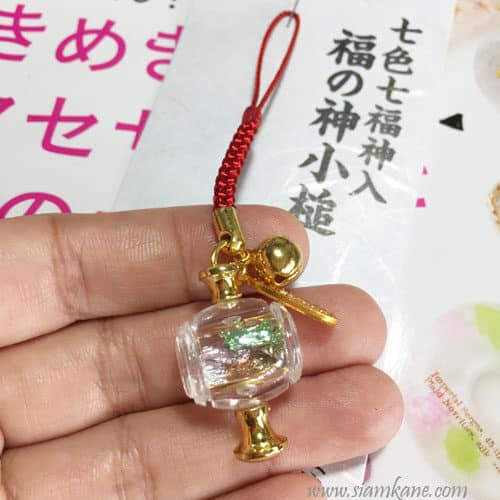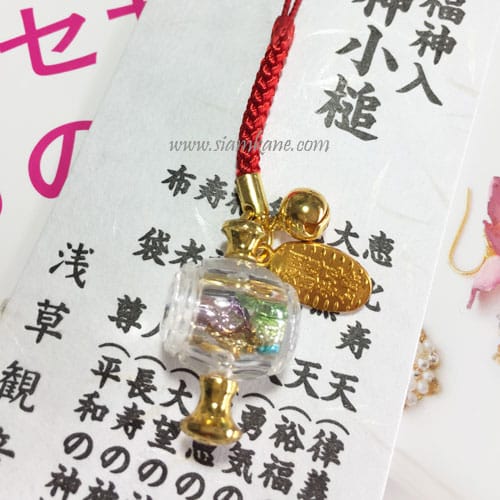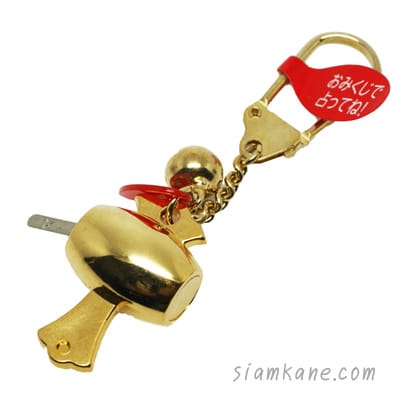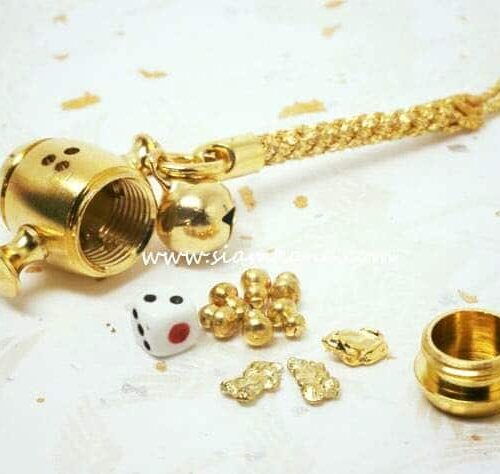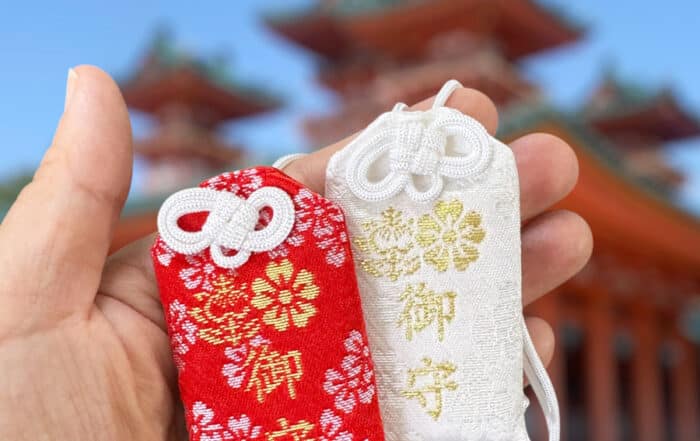Kozuchi Lucky Mallet
The “Kozuchi” refers to the Lucky Mallet in Japanese folklore, and it is often associated with good fortune and prosperity. Here are some details about the Kozuchi:
- Symbolism: The Lucky Mallet, or “Uchide no Kozuchi” (打ち出の小槌), is a magical mallet that is said to have the power to grant wishes and bring prosperity. In folklore, it is associated with the deity Daikokuten, one of the Seven Lucky Gods in Japanese mythology. Daikokuten is considered a god of wealth, commerce, and prosperity.
- Legend: According to the legend, the Kozuchi is a small mallet that, when swung, has the ability to produce valuable items or fulfill wishes. It is often depicted as a small, hammer-like object.
- Connection to Daikokuten: Daikokuten is commonly portrayed holding a sack of treasures in one hand and the Lucky Mallet in the other. The mallet symbolizes the ability to “tap out” or create wealth and prosperity. The imagery of the Kozuchi is sometimes also associated with the idea of bringing good fortune to one’s home.
- Good Luck Charm: Due to its association with prosperity and good fortune, the Kozuchi is sometimes used as a good luck charm. People may have miniature replicas of the Lucky Mallet or related symbols to invite wealth and success into their lives.
If you are interested in obtaining a Kozuchi Lucky Mallet or related charms, you might find them available at Shinto shrines, Buddhist temples, or places associated with Daikokuten worship. When obtaining such items, it’s recommended to check with the priests or staff at the shrine or temple to understand the intended purpose and any associated rituals or traditions. Keep in mind that the interpretation of symbols can vary, and it’s essential to consider the cultural and religious context in which they are presented.
QUICK MENU
RECENT POSTS
Sayuri Koi2024-11-24T22:48:34+07:00
Discovering Gotokuji omamori : Uncovering the Mysteries and Magic of the Lucky Cat Temple
Sayuri Koi2024-11-24T22:48:34+07:00Uncategorized|
TAGS
5 yen
amulet
Cat Luck
charm
Charms for Travelers
chusonji
fushimi
good fortune cat
hiraizumi
inari
japanese bracelet
japanese good luck bracelet
Japanese love amulet
japanese lucky gods
Japanese Omamori
kami
kitsune
Kiyomizu
Kyoto
love
love charm from Kyoto
love omamori
Luck Bracelet
luck coin
lucky
Lucky bracelet
Lucky CAT
Lucky charm
lucky coin
Maneki Neko
nonomiya
omamori
Omamori Charms
omamori for love
shrine
talisman
Japanese-Omamori® is an Omamori Online store established since 2001. sells Omamori and other products from Japan locate in Thailand. We were inspired by ecotourism and admired the uniqueness of Japan.
Japanese-Omamori®は2001年に設立されたお守りオンラインストアです。日本からタイにあるお守りやその他の商品を販売しています。私たちはエコツーリズムに触発され、日本の独自性に感心しました。
© Copyright 2012 - 2025
Japanese-Omamori.com
Best Omamori Online Shop
All Rights Reserved



